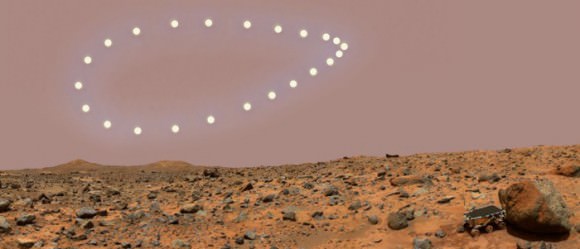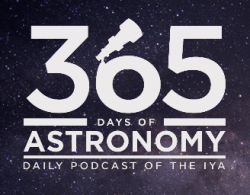There are a lot of solar system space missions coming up, plus – as always – a plethora of astronomical events taking place, so NASA has decided to declare the “Year of the Solar System” (YSS). But this year is so big, it won’t fit into an Earth year — however, a Martian year just about covers it, so from now until August, 2012 we’re celebrating.
“During YSS, we’ll see triple the usual number of launches, flybys and orbital insertions,” said Jim Green, the director of Planetary Science at NASA headquarters. “There hasn’t been anything quite like it in the history of the Space Age. History will remember the period Oct. 2010 through Aug. 2012 as a golden age of planetary exploration.”
Below you’ll see a list of mission activities that will take place, but also, the YSS organizers will have special events – both online and at various venues – to help us all celebrate.
One project near and dear to my heart is the 365 Days of Astronomy podcast, which will be continuing at least through 2011. Universe Today readers, you’d help me out A LOT (I’m the 365 Days project manager) by signing up to do a podcast. Podcasting is an easy and wonderful way to share your knowledge, experiences and love of astronomy or space. We give you lots of info about what you need to do to created a podcast. Check out the website, the calendar for available dates in 2011, and you can contact me directly to sign up for a date!
For other things associated with the YSS, there are also activities and materials available for classrooms and teachers, afterschool programs, astronomy clubs and more.
Right now, during December and January, the activities focus on investigations of our planetary family tree. Conduct the Explore the Celestial Neighborhood … in Your Neighborhood! activity and others fun projects that examine what a planet is and how we investigate planets.
There is also information on how to observe the total lunar eclipse on December 21, or activities to simply note the change in lunar phases over the course of a month.
You can also submit photographs, artwork, music, or words of your YSS experiences at the Share Your Stories page.

As far as the solar system missions going on we’ve already enjoyed the flyby of Comet Hartley 2 by the Deep impact/EPOXI spacecraft, and the NASA O/OREOS (“Organism/ORganic Exposure to Orbital Stresses,”) spacecraft was launched in November 2010, to study “the durability of life in space.” It is a nanosatellite (a cubesat), only 5.5 kilograms in mass, and we’ll certainly be hearing more about that spacecraft soon.
NASA NanoSail-D was also launched by the same rocket, and it has been ejected from the spacecraft but hasn’t yet unfurled its sails. We’ll post something as soon as any news on that emerges.
Here are more upcoming mission highlights as part of the YSS:
Stardust NExT encounters comet Tempel on February 14.
MESSENGER enters an orbit around the planet Mercury on March 18.
Dawn begins its approach to the asteroid Vesta in May, for a mission between 2011 and 2012. It will also visit the dwarf planet Ceres in 2015.
The Juno spacecraft will launch to Jupiter in August 2011. It will study the planet’s composition, gravity field, magnetic field, and polar magnetosphere.
GRAIL, or the NASA Gravity Recovery and Interior Laboratory (GRAIL) spacecraft will launch for a mapping mission to the Moon in September 2011.
Curiosity, or the Mars Science Lab will launch in November 2011. This is a big, car-sized rover that will look for potential habitable places, and more, on Mars. Curiosity is slated to land in August, 2012.


